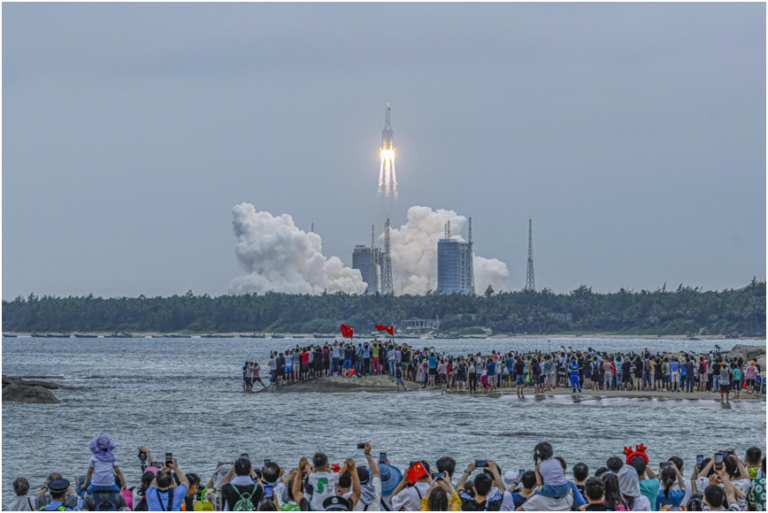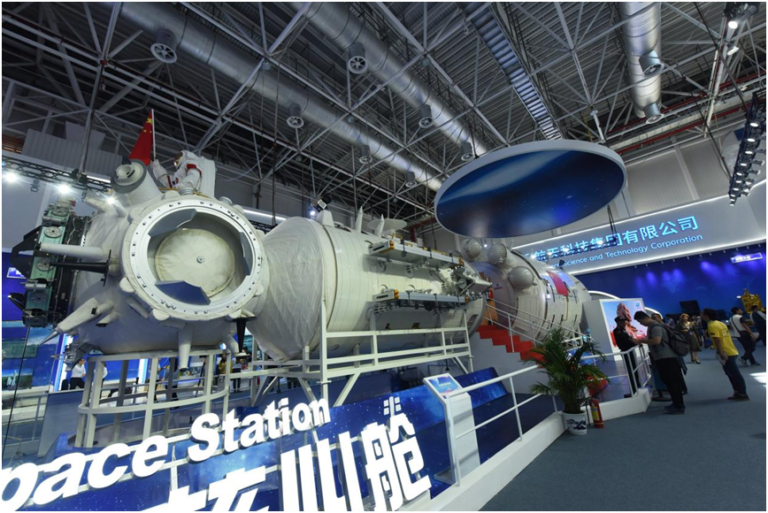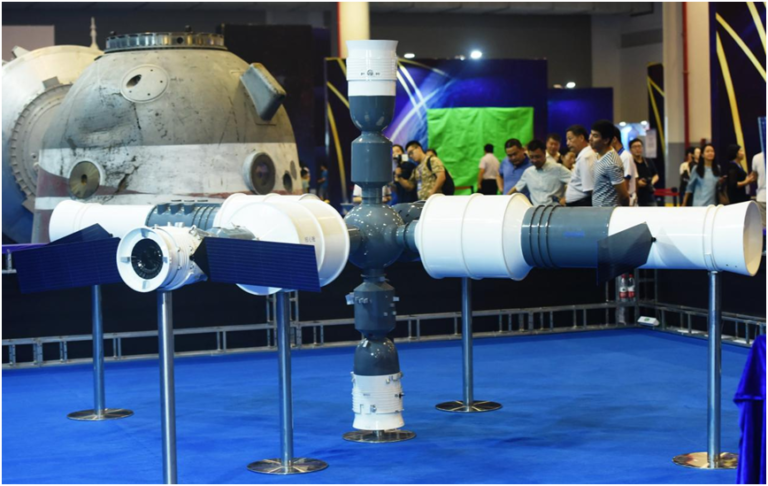
By Yu Jianbin, People’s Daily
The in-orbit construction of China’s space station is expected to be completed this year, during which the country plans to carry out six launch missions, according to a press conference on the latest developments in China’s space station construction held on April 17.
One day earlier,three Chinese astronauts of the Shenzhou-13 manned spaceshipsent to orbit for the construction of China’s space stationreturned to Earth safely after their six-month stay in space,completingthe Shenzhou-13 manned spaceflight mission successfully.
The construction of China’s space station consists of tasks in two stages: verification of key technologies and in-orbit construction, said Hao Chun, director of the China Manned Space Engineering Office (CMSEO), at the press conference.
Since 2020, China has successfully implemented six spaceflight missions, including the maiden flight of China’s carrier rocket Long March-5B,Tianhe core module of its space station, the Shenzhou-12 and Shenzhou-13 manned spacecraft, and the Tianzhou-2 and Tianzhou-3 cargo spacecraft,all of which helped the country achieve the goal of verifying key technologies for space station construction and laid a solid foundation for the completion of tasks during the next stage of in-orbit construction, according to Hao.
During the stage of key technology verification, breakthroughs have been made in many technologies, including thoseconcerning astronauts’ long-term stay and health care in space, regenerative environmental control and life support system, Hao pointed out.
The Shenzhou-13 crew’s flawless completion of all scheduled duties demonstrates that China is fully capable of supporting astronauts’ long-term stay in space.
The Tianhecore module of the space station has been in orbit for almost one year, during which it completed smoothly therendezvous and docking with two manned spacecraft and two cargo spacecraft, Yang Hong, chief designer of the space station system of the China Manned Space Program, said at the press conference.
The core module’s regenerative life support system has provided aoptimal environment for astronauts’metabolism needs in orbit during the three-month stay of the Shenzhou-12 crew and the six-month stay of the Shenzhou-13 crew, Yang added.

Large-scale flexible solar cell wings have been supplying energy to the core module and the combinations of it and other spacecraft, and provided sufficient energy for tasks requiring a great amount of energy, such as extravehicular activities, rendezvous and docking, and a transposition test of the Tianzhou-2 cargo craft using the space station’s robotic arm, with their power generation capacity exceeding design expectations.
The robotic arm has also played an important role in tasks during the whole stage of key technology verification. It has completed tasks including assisting astronauts with their extravehicular activities, transposition of cargo spacecraft, and extravehicular status inspection.
As the key technology verification stage of the space station project has been completed, the project has officially entered the in-orbit construction stage, according to Hao.
China has planned six spaceflight missions for this year, including the launch of the Tianzhou-4 cargo spacecraft in May, the Shenzhou-14 manned spacecraft in June, the lab module Wentian in July, the lab module Mengtian in October, the Tianzhou-5 cargo spacecraft and the Shenzhou-15 manned spacecraft, Hao said.
The Shenzhou-14 crew will consist of three astronauts, who will stay in orbit for six months, according to Hao, who disclosed that three more astronauts will be sent into space aboard the Shenzhou-15 spaceship near the end of the Shenzhou-14 mission. Crew members of Shenzhou-14 and Shenzhou-15 missions will spend a week together on board the space station during their rotation, after which the Shenzhou-15 crew members will work and live in space for six months.
The core module Tianhe and the lab modules, Wentian and Mengtian, will form a T shape to complete the in-orbit construction of China’s space station,Hao said.
Research and development of the Wentian and Mengtian lab modulesare progressing smoothly. Upon completion of the space station, the three modules will have a combined living space of more than 110 cubic meters.
With six sleeping areas and two sanitation areas, the space station will be able to support long-term stays by three astronauts and short-term stays by six astronauts of two crews.
There will be more room for activities in the space station if counting that to be provided by manned spaceship and cargo spacecraft that will dock with the space station.

After the in-orbit construction of the space station is completed this year, the space station project will enter a new stage of application and development spanning more than 10 years, according to Hao, who added that the initial plan is to send two manned spaceships and two cargo spacecraft into space every year.
Meanwhile, astronauts will stay in orbit for an extended period of time to carry out space scientific and technological experimentsand maintain the space station, he said.
China will also develop new-generation carrier rockets and manned spaceships so as to significantly enhance the country’s manned space program’s overall capabilities and technological level, Hao said.
During the new stage of application and development, astronauts will use the science lab cabinets in the space station modules and large payload facilities outside the modules to carry out larger-scale space research experiments and tests of new technologies in fields including space life science and human body studies, microgravity physics science, space astronomy and Earth science, as well as new space technology.
“While carrying out research and development tasks for the construction of the space station, we have also pursued breakthroughs in key technologies for a manned lunar landing and deliberated on the plan for the mission,” said Hao, adding that the focus of China’s manned spaceflight missions will be shifted from the exploration of terrestrial space to that of cislunar space and then deep space.










